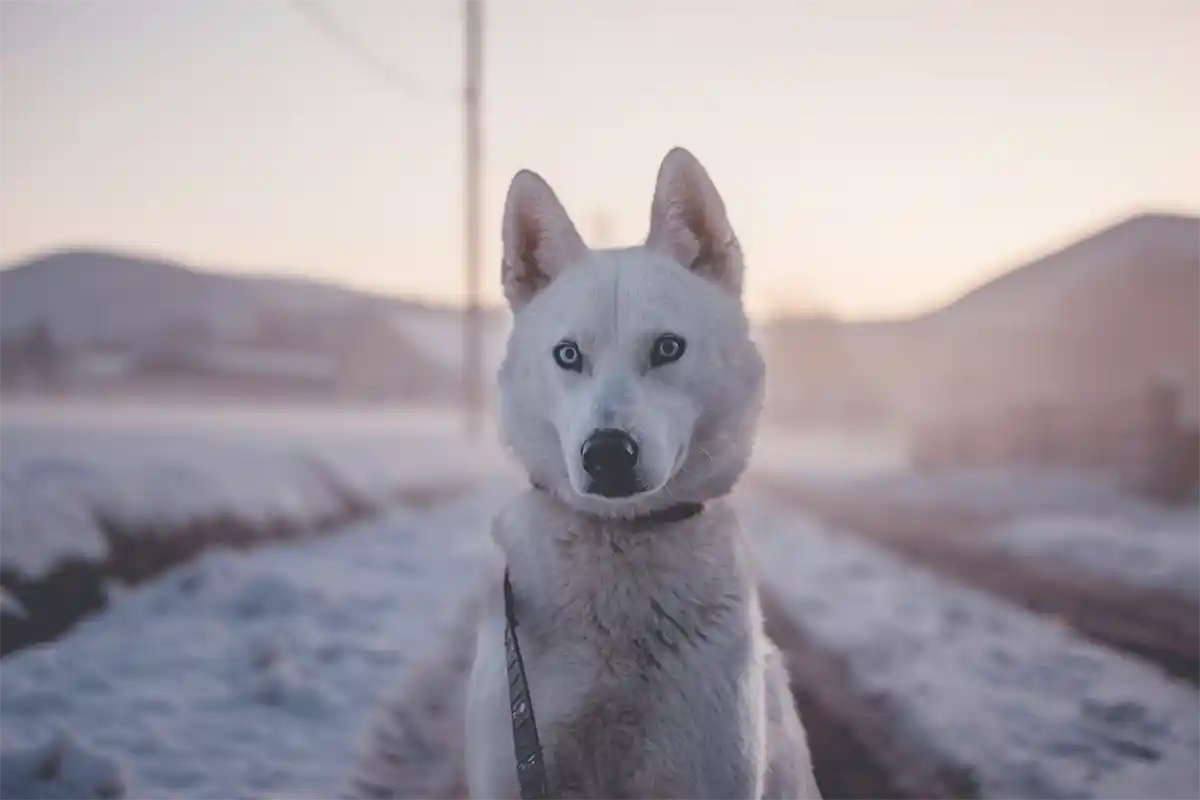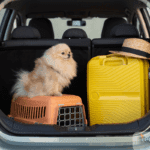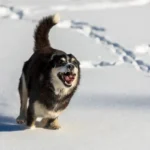Winter months bring cold temperatures that can pose unique challenges to keeping pets safe and healthy. Just like humans, our furry companions need extra protection and care during the colder months. From freezing temperatures to hazardous winter conditions, pets are vulnerable to frostbite, hypothermia, and dehydration.
This guide provides cold weather safety tips to help pet owners protect their beloved animals from the season’s risks. With the right precautions, you can ensure your pets remain cozy, comfortable, and safe.
👉 For more detailed strategies, check out our “12 Science-Backed Ways to Keep Your Dogs and Cats Cozy This Winter”.
Recognizing Cold Weather Risks
1. Frostbite and Hypothermia
Signs of Frostbite: Pale or discolored skin, swelling, and cold extremities. Frostbite most commonly affects paws, ears, and tails.
Signs of Hypothermia: Shivering, lethargy, weakness, and pale gums. Severe hypothermia may lead to difficulty breathing or collapse.
Dr. Esther Knoetze’s Advice: “Monitor your pet closely for these symptoms, especially during prolonged exposure to freezing temperatures. Early detection is key to preventing serious complications.”
👉 Learn more about keeping vulnerable breeds warm in our “Airedale Terrier Breed Guide”.
2. Toxic Winter Hazards
- Ice-Melting Chemicals: Salt and de-icers can irritate paws and be toxic if ingested.
- Antifreeze: Even small amounts of antifreeze are highly toxic. Ensure spills are cleaned immediately and containers are securely stored.
Preventive Measure: Wipe your pet’s paws with a damp cloth after outdoor walks to remove salt and chemicals. For more tips, visit our guide on “Winter Pet Hazards”.
Outdoor Winter Safety Tips
3. Limit Outdoor Time
Follow temperature-based guidelines:
Above 32°F: 30–60 minutes of outdoor play.
20–32°F: Limit to 15–30 minutes.
Below 20°F: Keep outdoor time to 5–15 minutes.
Dr. Esther Knoetze’s Tip: “Short, supervised outdoor sessions are ideal for exercise without risking hypothermia. Always bring your pet indoors if they start to shiver or seem reluctant to move.”
4. Provide Winter Gear
| Product | Features | Price |
|---|---|---|
| Ruffwear Climate Changer Fleece | Lightweight, insulated warmth | $39.95 |
| QUMY Waterproof Dog Boots | Anti-slip, waterproof, adjustable straps | $25.00 |
| Musher’s Secret Paw Wax | Prevents cracking, non-toxic | $16.00 |
👉 Read about essential winter products for pets in our “Winter Gear Guide for Dogs”.
5. Supervise Outdoor Activities
Ensure your pet remains active while outside to retain body heat. Avoid letting them lie on cold surfaces or snow for extended periods.
Keep an eye on outdoor cats, as they may seek shelter under car hoods. Knock on the hood before starting your car to ensure no animals are hidden underneath (source: ASPCA).
Indoor Comfort Tips
6. Create a Warm Environment
- Maintain indoor temperatures between 68–72°F.
- Use draft stoppers to seal windows and doors.
- Keep your pet’s bed elevated and away from uninsulated walls or cold tiles.
7. Provide Warm Bedding
- Self-Warming Beds: Reflective thermal bedding retains body heat.
- Extra Blankets: Layer fleece blankets to create a cozy sleeping area.
Dr. Esther Knoetze’s Recommendation: “Invest in high-quality bedding that suits your pet’s size and habits. Cats, for example, love heated beds that mimic their body temperature.”
8. Indoor Exercise and Enrichmen
- Engage your pet with interactive toys and DIY obstacle courses to keep them physically active and mentally stimulated.
Nutritional and Hydration Needs
9. Adjust Caloric Intake
- Pets may require up to 30% more calories in winter to maintain body heat.
- Opt for high-protein and fat-rich diets to support energy levels.
Dr. Esther Knoetze Explains: “Winter increases a pet’s metabolic demand. Providing nutrient-dense meals can help them generate the extra energy needed to stay warm.”
10. Prevent Dehydration
- Offer fresh water frequently. Heated water bowls can prevent freezing.
- Include moisture-rich foods, such as wet dog or cat food, to supplement hydration.
Special Considerations for Senior Pets and Vulnerable Breeds
11. Caring for Senior Pets
- Joint supplements like Cosequin can alleviate arthritis exacerbated by cold temperatures.
- Provide additional bedding layers to ensure warmth and comfort.
Dr. Esther Knoetze’s Advice: “Senior pets are particularly vulnerable in winter. Regular vet check-ups are essential to monitor joint health and overall well-being.”
12. Breed-Specific Winter Needs
Short-haired and small breeds require extra insulation, while larger breeds might need protective paw gear.
🐶 Explore breed-specific advice in our “Airedale Terrier Breed Guide”.
Additional Note: Breeds like Huskies and Malamutes are naturally better adapted to cold, but they still require monitoring during extreme weather.
13. Outdoor Pets
For pets that live or spend significant time outdoors, provide a heated shelter with proper insulation and waterproofing.
👉 Explore tips on caring for senior and vulnerable pets in our “Senior Pet Care Winter Guide”.
Emergency Preparedness
14. Recognize Warning Signs
- Watch for signs of hypothermia and frostbite. Early intervention is crucial.
15. First Aid Tips
- Warm frostbitten areas with a warm (not hot) compress. Never rub affected areas as it can cause further damage.
- If hypothermia is suspected, wrap your pet in warm blankets and contact your veterinarian immediately.

FAQ: Your Winter Pet Care Questions Answered
Q1: How can I tell if my pet is too cold indoors?
- Shivering, curling up tightly, or seeking warm areas are signs your pet is too cold. Provide extra blankets, a self-warming bed, or ensure the room temperature is between 68–72°F. Cats, in particular, enjoy heated beds that mimic body heat.
Q2: What’s the best way to protect my dog’s paws during winter?
- Use waterproof booties to prevent frostbite and irritation from salt or snow. Alternatively, apply paw wax before walks to create a protective barrier. Always wipe paws clean after exposure to winter elements to prevent irritation or ingestion of harmful chemicals like ice-melt salts.
Q3: Should I increase my pet’s food portions in winter?
- Yes, pets may require up to 30% more calories in colder months to maintain their body heat, especially if they spend time outdoors. Consult your veterinarian to adjust their diet for the season.
Q4: How can I keep my outdoor cat warm and safe during winter?
- Provide a heated, insulated shelter with straw bedding to trap warmth. Ensure the shelter is elevated to avoid moisture from the ground. Check daily to ensure water isn’t frozen and food is readily available.
Q5: What should I do if my pet shows signs of frostbite or hypothermia?
- For frostbite: Warm the affected areas gently with a warm (not hot) cloth, avoid rubbing, and consult your vet immediately. For hypothermia: Wrap your pet in warm blankets, use warm water bottles (wrapped in a towel), and seek emergency veterinary care.
Q6: Can I exercise my pet indoors during extreme cold?
- Absolutely! Activities like laser pointer games, indoor fetch, or setting up an obstacle course can help keep pets active and mentally stimulated. Puzzle toys and treat dispensers are also great for enrichment.
Q7: Is it safe to leave my pet in the car during winter?
- No, cars can quickly become too cold in freezing weather, posing risks of hypothermia. Always bring your pet with you or leave them in a warm, safe environment at home.
Q8: Are some dog breeds naturally better equipped for winter?
- Yes, breeds like Siberian Huskies, Malamutes, and Bernese Mountain Dogs have thick, double-layered coats that help them tolerate cold weather. However, even these breeds need protection during extreme conditions.
Conclusion
Winter can be a magical season, but it comes with unique challenges for pet owners. By following these cold weather safety tips, you can ensure your pets stay warm, healthy, and happy throughout the season. Share these tips with fellow pet lovers to spread awareness and keep furry friends safe!
👉 For a complete winter care plan, visit our “12 Science-Backed Ways to Keep Your Dogs and Cats Cozy This Winter”.
🐾✨ Discover new ways to keep your pets cozy, happy, and healthy during the chilly months.
Share this guide with other pet lovers and exchange your best winter care hacks. 🐶❤️











